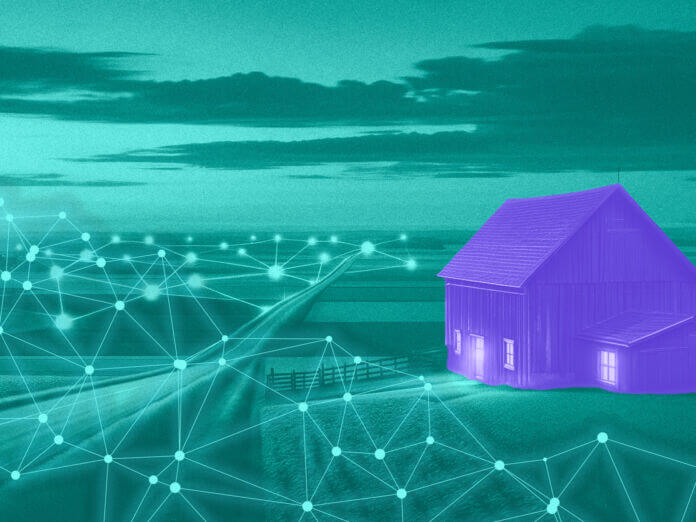
In an era where digital connectivity is pivotal, radio technologies and distributed processing paradigms emerge as revolutionary technologies with the potential to transform our digital landscape. However, these new technological developments barely reach rural areas, widening the socioeconomic gap concerning urban areas. This article will briefly explore some key reasons for the digital divide and examine how edge computing in rural areas might assist in reducing it.
Understanding the Digital Gap
Technological access and infrastructure differ widely between urban and rural regions. This variance not only caps the potential of rural communities but also expands the digital divide. Such a divide affects millions in rural zones. In these regions, especially those sparsely populated, the absence of high-speed internet and advanced tech infrastructure is a significant barrier.
It hampers economic growth and access to vital services. A mix of insufficient infrastructure, scant tech investments, and a lower expected return for service providers contribute to this expanding gap. To address this issue, a combined strategy from the public and private sectors is necessary.
Edge computing offers a transformative solution, especially for rural areas. But what is edge computing, and how can it help bridge the digital divide in these locales?
Edge Computing as a Catalyst
Edge computing brings computation and data storage closer to where it’s needed, reducing reliance on distant data centers. This approach is key in rural areas, where long distances to central servers can cause high latency and slow internet speeds. Edge computing’s versatility allows various computing tasks to spread across different layers, enhancing efficiency.
The Continuum of Compute Zones
Hence, edge computing is based on a continuum of compute zones, including examples such as extreme edge, far edge, near edge, and cloud/data center layers. Note: The names given to the layers are not set by any standard; they are simply a means to identify strategic locations for deploying computing devices.

The continuum of edge computing
The image above shows an edge-computing architecture, indicating strategic application deployment across layers. Depending on their needs, applications may function in a layer closer to the user, ensuring faster response times, or in a layer further away where more computing resources are present.
Edge computing significantly shortens the response time for online requests by processing data near the user. This speed is vital for real-time farm monitoring, telehealth, and online learning applications. Moreover, in areas with limited bandwidth, sending all data to distant servers can clog the network, creating slower speeds for all. Edge computing addresses this by managing most data locally, thus decreasing the data traveling over the network.
Neutral Host: A Collaborative Concept
The neutral host is an innovative concept that often pairs with edge computing. This concept relies on a shared computing infrastructure that enables multiple users to access advanced technology without the high costs of individual setups. This shared model also promotes community collaboration, as users can work together to utilize these resources.
In practice, a neutral host can facilitate a diverse array of sophisticated applications and services. For instance, it underpins the deployment of Internet of Things (IoT) solutions for precision agriculture, empowering farmers to enhance yields and minimize waste. This same IoT infrastructure can also bridge the education gap in rural areas. By providing high-speed connections for remote learning platforms, a neutral host enables students in remote locations to access a wealth of educational resources and virtual classrooms.
Additionally, the neutral host model is crucial for telehealth services, offering reliable connectivity for remote medical consultations and ongoing patient monitoring. Centralizing infrastructure investment, the neutral host model reduces costs and expedites the uptake of innovative technologies, driving a swift overhaul in rural connectivity and access to education.
Conclusions and the XGAIN Project
Overcoming the challenges of modernizing rural technology requires a united effort from both the private and public sectors. The private sector’s role in innovation and infrastructure must be complemented by public sector support through policies, funding, and initiatives that enhance digital literacy.
Concepts like neutral host and edge computing should be taken into account. This combined approach not only facilitates the deployment of advanced technologies in rural areas but also ensures their sustainable integration and use within these communities.
Within this framework, the XGAIN project emerges as a significant contributor. It aims to build a cost-effective and environmentally friendly technological ecosystem and to facilitate the adoption of modern technologies in rural communities through the knowledge facilitation tool (KFT). Such KFT provides tailored best-fit technological solutions intended for rural, coastal, and forestry stakeholders, using a user-friendly application.

Funded by the European Union. Views and opinions expressed are however those of the author(s) only and do not necessarily reflect those of the European Union or the European Research Executive Agency (REA) (granting authority). Neither the European Union nor the granting authority can be held responsible for them.
- SEO Powered Content & PR Distribution. Get Amplified Today.
- PlatoData.Network Vertical Generative Ai. Empower Yourself. Access Here.
- PlatoAiStream. Web3 Intelligence. Knowledge Amplified. Access Here.
- PlatoESG. Carbon, CleanTech, Energy, Environment, Solar, Waste Management. Access Here.
- PlatoHealth. Biotech and Clinical Trials Intelligence. Access Here.
- Source: https://www.iotforall.com/edge-computing-rural-areas-closing-digital-divide



